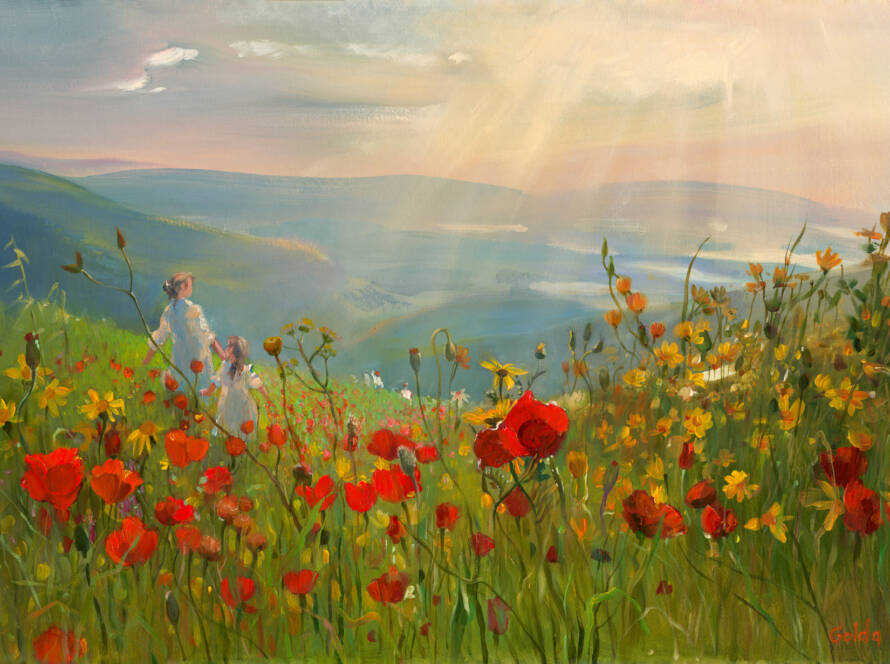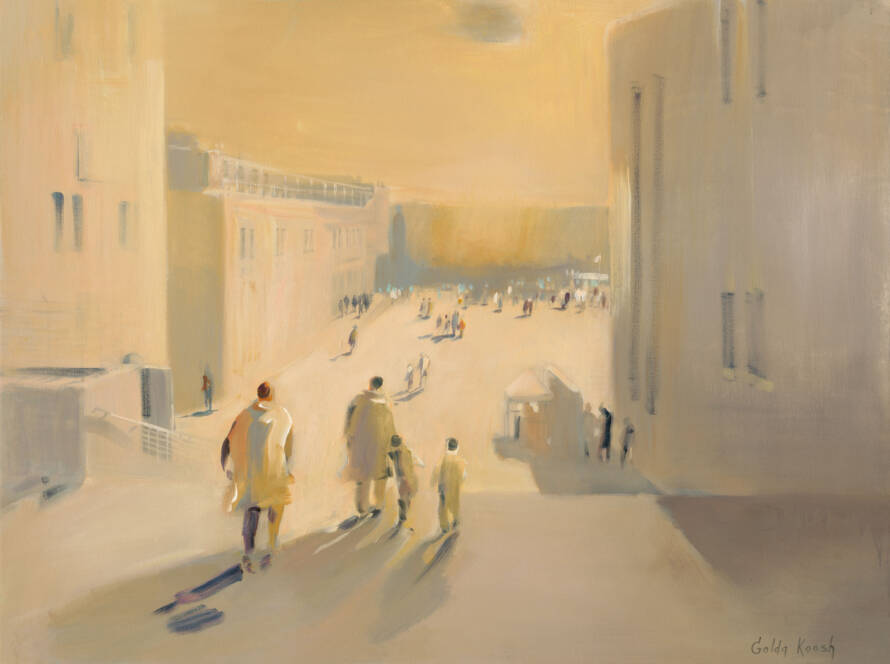What transforms a simple calendar change into a profound spiritual awakening? For millions worldwide, the Jewish New Year transcends dates on a page, becoming a portal to divine connection. Known as the “Head of the Year” in Hebrew, this sacred observance turns introspection into art and time itself into a canvas for renewal.
In 2025, the holiday begins at sunset on September 22, stretching through twilight on September 24. These two days mark more than a beginning year; they commemorate humanity’s creation and our enduring covenant with the Divine. Blasts of the shofar echo like ancient heartbeats, calling communities to collective reckoning and hope.
The rituals weave personal reflection with shared worship. Families gather for apples dipped in honey, their sweetness symbolizing prayers for prosperity. Prayers flow like rivers, carrying whispers of forgiveness and dreams of transformation. Through these acts, ordinary moments become threads in a 5,000-year-old tapestry of faith.
This is not mere tradition; it’s a living dialogue between past and future. As the first of the Days of Awe, it sets souls on a ten-day journey toward Yom Kippur’s clarity. Here, history breathes through rituals, inviting every participant to write their chapter in an eternal story.
Key Takeaways
- Rosh Hashanah 2025 begins September 22 at sunset, spanning two days of observance
- Marks both the Jewish New Year and humanity’s creation anniversary
- Combines personal introspection with community rituals like shofar blasts
- The period of the High Holidays begins with a ten-day duration that concludes with Yom Kippur
- Symbolic foods and prayers emphasize renewal and divine connection
- Blends ancient traditions with contemporary spiritual relevance
Exploring the Spiritual Significance of Rosh Hashanah
In the hush of autumn’s arrival, a sacred dialogue between humanity and eternity unfolds. This period marks not merely a calendar transition but a cosmic recalibration. Where earthly cycles mirror divine rhythms. Ancient roots intertwine with timeless truths, creating a tapestry of meaning that spans generations.
The Origins and Meaning of the Jewish New Year
Emerging from fertile crescent harvest traditions, the observance carries agricultural wisdom into spiritual practice. The Talmud teaches that celestial ledgers open during these days, recording deeds with meticulous care. Yet this divine accounting flows from compassion, inviting refinement rather than punishment.
Three symbolic books, documenting the righteous, the wicked, and those between, reflect life’s complexity. “The Holy One weighs hearts like sheaves of grain,” ancient sages wrote, framing judgment as nourishment for growth. What began as an economic reset became humanity’s annual invitation to realign with creation’s original harmony.
The Connection to Days of Awe and Divine Judgment
The ten-day journey from renewal to atonement forms a spiritual bridge. Like dawn softening into day, celebratory feasts gradually deepen into Yom Kippur’s introspection. This sacred interval transforms ordinary time into a crucible for transformation.
Every action becomes a prayer. Every choice echoes in eternity’s halls. Through this lens, divine judgment reveals itself as love’s sharpest tool, carving space for souls to shed burdens and rise renewed.
Understanding how Rosh Hashanah is celebrated: Customs and Rituals
Sacred spaces hum with whispered prayers during these holy days. Synagogue gatherings blend personal introspection with collective devotion, forming a spiritual mosaic. The air thrums with ancient melodies as communities unite under shared tradition.
Sacred Gatherings and Inner Journeys
Worshippers cradle weathered machzor prayer books, their pages heavy with centuries of wisdom. Unique liturgical poems weave through services, transforming ordinary prayer into cosmic dialogue. A table below reveals key differences between daily and High Holiday worship:
| Element | Daily Service | Rosh Hashanah Observance |
| Liturgical Additions | Standard prayers | Piyyutim poetry |
| Prayer Book | Siddur | Machzor |
| Community Focus | Individual devotion | Collective accountability |
Greetings of “L’shanah tovah” echo through sanctuary halls. These blessings become bridges between souls, carrying hopes for divine favor.
Heartwork of Return
The Jewish holidays transform self-examination into sacred art. Teshuvah, spiritual return, demands honest reckoning with past actions. Families discuss growth over honey-dipped apples, merging personal resolve with communal support.
This time of renewal invites participants to map their moral landscape. Through prayer and reflection, ordinary days become portals to transcendence.
Traditional Customs and Symbolic Practices
Garments become prayers when dawn breaks on this sacred day. Across continents, communities unite through tactile rituals that transform cloth and water into bridges between earth and heaven. These traditions carry ancestral wisdom through tactile acts of devotion.
Wearing New and White: Symbolizing Purity
Crisp fabrics whisper promises of renewal. Many choose unblemished white attire, visual echoes of angelic purity, to mirror inner aspirations. This practice turns wardrobes into declarations of hope for the coming year.
| Daily Attire | Rosh Hashanah Clothing |
| Varied colors | White dominance |
| Functional focus | Symbolic intentionality |
| Personal style | Communal unity |
The ritual extends beyond aesthetics. New garments honor creation’s endless cycle, celebrating humanity’s role in shaping the world anew each autumn.
The Tashlikh Ceremony and its Significance
As shadows lengthen on the first day, streams become confessors. The Tashlikh ritual transforms riverbanks into sanctuaries where breadcrumbs float like regrets downstream. Water currents answer the call for absolution, carrying burdens to forgotten depths.
This embodied prayer uses nature’s flow to manifest spiritual release. Participants often recite:
“You will cast all their sins into the depths of the sea”
Pebbles or bread crusts become tangible metaphors. Their disappearance beneath rippling surfaces mirrors the soul’s journey toward lightness. A physical testament to renewal’s possibility.
Celebrating with Symbolic Foods and Festive Delicacies
Dining tables transform into sacred altars during this season. Each dish whispers ancestral wisdom through flavors, textures, and symbolic shapes. These edible prayers carry hopes for divine favor and earthly abundance.
Apples, Honey, and Round Challah: A Sweet New Year
Golden honey coats crisp apple slices in the opening ritual. This act transcends taste; it becomes a sweet new year manifesto. Families recite blessings as sticky fingers grasp fruit, their sweetness mirroring prayers for unbroken joy.
| Symbolic Food | Spiritual Meaning |
| Apples dipped in honey | Desire for life’s sweetness |
| Round challah bread | Eternal renewal cycle |
| Pomegranate seeds | Abundance of merits |
| Fish head | Leadership in destiny |
The round challah’s coiled form speaks volumes. Bakers twist dough into circles, echoing creation’s endless rhythm. When torn and shared, this bread becomes communion. A tangible promise of continuity.
“Just as honey never spoils, so may our resolve for goodness remain eternal.”
Bitter flavors vanish from menus intentionally. Tables overflow with dates, carrots, and honey cakes instead. Each bite aligns palates with spiritual aspirations, turning meals into meditations on grace.
Pomegranates burst with ruby seeds like countless blessings waiting to unfold. Their consumption becomes an act of faith. A belief that the coming year holds undiscovered mercies as plentiful as these jeweled fruits.
The Reverence of the Shofar and Its Timeless Call
When ancient breath meets hollowed horn, time collapses into sacred resonance. This primal instrument carries humanity’s first musical cry across millennia. Its voice shaped from rams’ curved horns becomes divine semaphore. A sound code translating mortal yearning into celestial speech.
The Anatomy of Awakening
The shofar ritual transforms air into archaeology. Each blast exhumes memories of binding Isaac and temple service. Musicians master four distinct calls:
| Blast Type | Pattern | Symbolism |
| Tekiah | Unbroken note | Divine sovereignty |
| Shevarim | Three broken tones | Heart’s fractures |
| Teruah | Nine staccato cries | Spiritual alarm |
| Tekiah Gedolah | Extended final blast | Eternal hope |
These patterns form a sonic ladder. Worshipers climb from brokenness to wholeness through structured crescendos.
During the month of Elul, dawn streets hum with anticipatory blasts. The ram’s horn becomes a spiritual metronome. Its daily pulses synchronize communities with repentance’s rhythm. “Sleepers, rouse your slumbering souls,” implores Maimonides’ timeless interpretation.
On the holy day, 100 blasts pierce the silence of the sanctuary. This numerical perfection mirrors creation’s completeness. Ten sefirot multiplied by ten commandments. Breath becomes prayer as blowers channel air through the horn, their cheeks flushing with effortful devotion.
The shofar‘s raw, unpolished sound defies musical ornamentation. Its roughness mirrors authentic introspection, unedited, vulnerable, and charged with transformative power. Through this ancient ram’s horn, time itself bends, allowing ancestors and descendants to share a single breath of renewal.
Reflecting on Heritage and Preparing for the Days of Awe
In the quiet between shofar blasts, souls chart their course through sacred time. The ten days following the New Year form a spiritual corridor. An invitation to mend fractured bonds and realign with purpose. This period transforms ordinary existence into a workshop for eternal truths.
Self-Examination and the Process of Teshuva
Ancient wisdom frames repentance as returning rather than punishment. Communities engage in Cheshbon HaNefesh—accounting of the soul—through candid self-assessment. Tables become altars where families dissect past actions and plant seeds for growth.
The journey crescendos on Yom Kippur, the day of atonement. Fasting and prayer strip away distractions, revealing humanity’s raw potential. As stars emerge on this holiest day, many find clarity in vulnerability. Their whispered hopes carried upward like incense.
This sacred bridge between celebration and contrition remains Judaism’s boldest spiritual innovation. It dares participants to rewrite their stories while honoring ancestral rhythms, a dance between divine grace and human agency.




